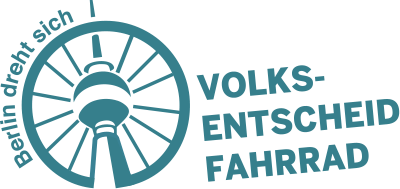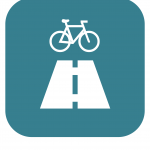
Aim 1: 350 kilometres of safe bicycle boulevards
Bicycle boulevards will form the backbone of Berlin’s prospective bicycle network and are established in side streets. Until 2025 at least 50 km of new bicycle boulevards shall be established annually to close existing gaps and create new routes. The Bicycle boulevard network’s expansion should focus in particular on routes that provide safe and comfortable reachability of relevant infrastructure for younger cyclists such as schools and sports facilities. They should at least have 5 metres in width, priority in traffic for cyclists as well as measures implemented to reduce volume of car traffic.
Find out more more about bicycle boulevards…
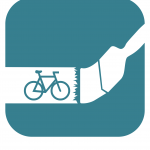
Aim 2: Two meter of width for bicycle lanes on all main roads
On all main roads easily trafficable bicycle ways or lanes are to be established, as possible, not restricting pedestrians. The width of bicycle ways and lanes need to provide sufficient space for safe overtaking manoeuvres between cyclists. The buffer zone between parked vehicles and bicycle ways or lanes should measure at least one meter in order to limit risks due to carelessly opened car doors. Bicycle traffic should no longer be directed across bus lanes and instead be allocated its own space.
Find out more about modern bicycle ways on main roads…
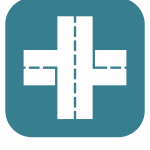
Aim 3: Making 75 dangerous crossroads safe every year
Crossroads are the predominant crash site for urban cyclists. We therefore demand the city of Berlin to adapt additional 25 of its most dangerous crossroads per year to the needs of safer cycling. These should be identified in regular dialogue with Berlin’s cyclists. Safer crossroads will require the removal of objects obstructing the sight between participants of traffic. Annually 50 additional crossroads should be fitted with waiting lanes for cyclists. After any severe accident with cyclist involvement the respective sites will have to be examined for their safety. If suboptimal traffic conditions at a crash site may have been causal in an accident, measures to improve safety must be taken within a period of six months.
More information about safer traffic junctions…
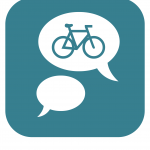
Aim 4: Transparent, fast and effective removal of deffects
Cyclist’s comfort and safety is often reduced by what appears to be small issues. These may include ways damaged by roots or high curbs. Such issues are to be solved fast and properly. For this purpose a list of issues is to be established and updated continuously. Issues on the list are to be solved within a period of six month. For any older cases a transitional period applies which ends on 31. December 2022. Online communication will facilitate the work of helpers that would otherwise remain ‘invisible’ also making the status of listed issues transparent to the public.
This is how the Radentscheid helps in fixing shabby bicycle ways…

Zim 5: 200.000 parking spaces for bicycles in streets and at public transport stops
Parking spaces for cycles are short everywhere in Berlin. Until 2025 100.000 new secure parking spaces at railway stations should be created. Additional 100.000 parking spaces should be created in living areas without blocking ways for pedestrians. These will be cleared from old and forgotten bicycles on a regular basis. In newly constructed public and private buildings a larger number of bicycle parking spaces are to be planned for.
How bicycle parking spaces enliven the streets…

Up till now needs of cyclists are not accounted for in traffic light circuits. Having to stop repeatedly costs a cyclist time and energy. Until 2020 traffic light circuits on at least 50 sections of main roads should be phased to allow swift progress of cyclists through waves of green light across several junctions. Public transport should also also be given priority in traffic light circuits while pedestrians should be given longer intervals of green light to allow elder and handicapped people to cross safely.
This is how cyclists ride the green wave…
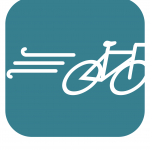
Aim 7: 100 kilometres of bicycle highways for commuter traffic
Bicycle highways enable cyclists to get on fast over long distances. As part of the new bicycle network highways will lead through and around the city alongside major routes of commuters. Until 2025 at least 100 kilometres of bicycle highways are to be constructed. The routes will receive colour labelling and cover distances between eight and twelve kilometres.
Riding fast and comfortable around town…
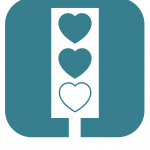
Aim 8: Police cycling squads and a special task force encountering bicycle theft
Even the best infrastructure becomes obsolete if it cannot be used. Cars blocking bicycle lanes are part of Berlin’s everyday life. Staff of the public order office and police, both in bicycle squads, will be able to penalise violations of traffic regulations. They will promote awareness of traffic regulations and considerate behaviour. The success rate in solving cases of bicycle theft will improve as a consequence of centralised investigative work by the police.
This is how Radentscheid envisions the tasks of police bicycle squads…

Aim 9: More personnel for a centralised bicycle department
Realising the new bicycle legislation requires sufficient personnel in Berlin’s public administration. This is currently not the case. It calls for clear responsibilities and a new top priority: a central department for bicycle traffic that deals with all respective issues. On the district level and in the department for traffic routing offices for coordination and planning will be set up to do the groundwork for the central department. Training of staff and the involvement of lobbyists will also be in the the central department’s area of responsibilities.
How bicycle legislation creates personnel and is implemented…

Aim 10: Sensitize Berlin for more bicycle traffic
Cycling is fun, affordable for everyone, health-promoting and enriches the quality of urban life. Cyclist’s share of total traffic is continuing to grow. Others are still waiting to be convinced or wish to learn about fair traffic behaviour and the expanding bicycle traffic. The public at large and in particular truck and cab drivers should be informed through special campaigns and training programs. Aggressive behaviour in traffic should be reduced while bicycle mobility should be encouraged and promoted as being part of a positive sense of live.
Why public relations work is important …
